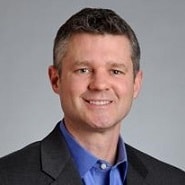Dick Taylor, MD, Chief Clinical Informatics Officer, BJC Healthcare
When workflow challenges are being discussed, the vast majority of time it’s in reference to clinicians, and for good reason — anything that’s introduced into the care process should helping, not hindering those who provide it.
But what about those receiving care? Shouldn’t their workflow issues be considered as well? Sean Kelly, MD, believes so, particularly when it comes to something as critical as obtaining controlled substances. It’s an area that has been plagued by “archaic processes” for too long, he noted during a recent panel discussion with Dick Taylor, MD, Chief Clinical Informatics Officer at BJC Healthcare, and Stephanie Lahr, MD, CIO and CMIO at Monument Health. “You had this weird dichotomy where everyone in healthcare started to adopt e-prescribing — except for those who needed it most, with medicines that are the most powerful and the riskiest for diversion and abuse. It’s a crazy scenario.”
And one that worsened during Covid-19, according to Taylor. Having patients — many of whom have mobility challenges — risk infection to come in to the office for a paper prescription, then have to take it to the pharmacy and wait for it, is “a huge dissatisfier,” he said. “That, to me, is the major challenge we’re addressing.”
Another, of course, is the fact that paper prescriptions are difficult to monitor, which places an unnecessary burden on providers. “It made it very difficult for us to track who was getting what and when, and whether it was appropriate,” said Kelly. “Given the challenges of the paper-based world that we had, and the trials and tribulations of monitoring through that, and being able to leverage new tech to overcome that has been really powerful.”

Sean Kelly, MD, CMO, Imprivata
As an emergency physician at Beth Israel Lahey Health, Kelly has witnessed firsthand the effects of drug abuse, and fully understood the safety concerns associated with e-prescribing — particularly when it was first introduced. Those concerns, however, were standing in the way of much-needed progress. When the DEA released the interim final rule in 2011, the bar was set “very high” in terms of security requirements.
Perhaps a bit too high, according to Taylor. In an effort to avoid front-end diversion, the DEA implemented a process that made it nearly impossible to forge prescriptions. The problem, he said, was that it also made it extremely difficult to fulfill legitimate orders. Since then, fortunately, the technology and processes have matured. “There are good vendors and good products that make it not only the safe and compliant thing to do, but it’s now easier than doing it on paper,” he said.
“The Burning Platform”
As with any IT initiative, e-prescribing is about more than just technology. The three prongs of a successful program, noted Taylor, are state mandates, federal requirements, and the industry itself. At this point, about 20 states have mandated that controlled substances are prescribed electronically, and several others coming on board next year.
These mandates, according to Kelly, have made a big impact, giving health systems “an excuse to enact what they were already trying to do, which was to make it all electronic.”
Taylor concurred, adding that the regulations provide a “burning platform” to help convince reluctant providers to adopt e-prescribing — and help integrated health systems like BJC meet the desired numbers. “It’s something we wanted to do anyway. But where we’re sitting, it’s a happy confluence between doing the right thing and being told to do the right thing. So we’re making sure we meet that.”
Lahr, whose organization is moving forward despite the lack of a state mandate, believes the requirements help vendors as well, which in turn helps providers.

Stephanie Lahr, MD, CIO and CMIO at Monument Health
As with most technologies that are introduced into healthcare, EPCS was “a bit clunky” at first, she noted, which can lead to a great deal of frustration. While the right intention was certainly there, the tools simply weren’t ready for prime time. Once regulations started to take hold, it provided the clarity vendors needed to improve the products, which has made a huge difference.
“When we have regulatory alignment with what we all really want to do, folks like Imprivata are able to align their resources to make sure the tools we’re rolling out are of the highest quality and standard,” she noted. And that means fewer physicians who refuse to change their workflow.
It also has another effect. “If they see other doctors use it successfully, they can become believers,” said Lahr, who has held the CMIO role for four years. “Creating those believers comes from having tools that make it easy to do the right thing.”
A Transformative Event
It also comes from having the right processes in place, according to Taylor, who offered best practices for starting down the path to EPCS:
- Commit to it. EPCS, he explained, “isn’t something where you can put a toe in the water, test it out with a few providers and see how it goes. You have to have a database set up, and you have to understand where patients are going.”
- Understand your providers. Leaders need to know which providers are prescribing controlled substances and prepare to target them effectively.
- Put together a game plan and get started. An initiative like this can’t be a two-year plan where at the end, everyone is up and running, said Taylor. “There’s a sweet spot; it’s not a week-long implementation, but it’s certainly not a year.”
EPCS, he noted, needs to be viewed as precisely what it is: a “transformative event for a health system,” and the sooner a plan is in place, the sooner organizations can reap the benefits. “The good thing is, provider satisfaction and patient satisfaction both tend to be very high, so you need to embrace it and move forward quickly.”
To view the archive of this event — Exploring the Fundamental Building Blocks of a Successful EPCS Program (Sponsored by Imprivata) — please click here.
